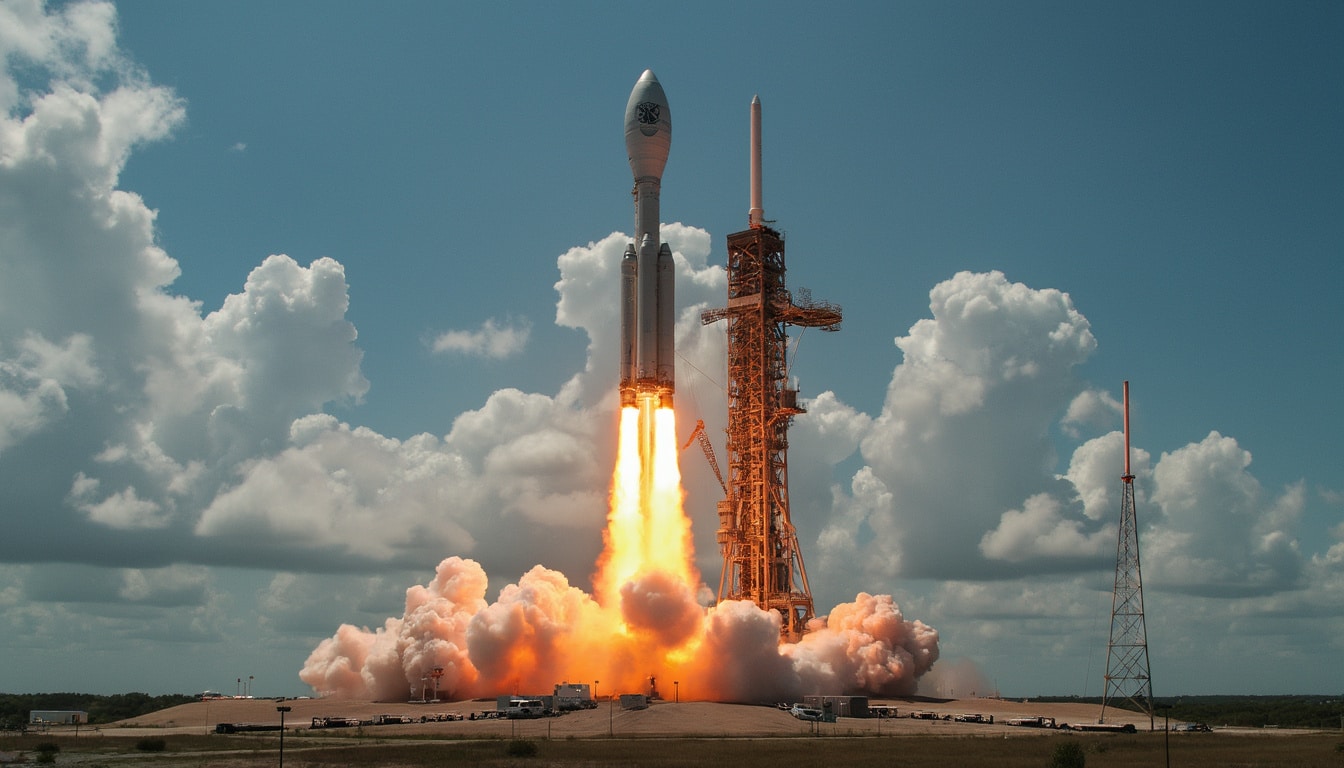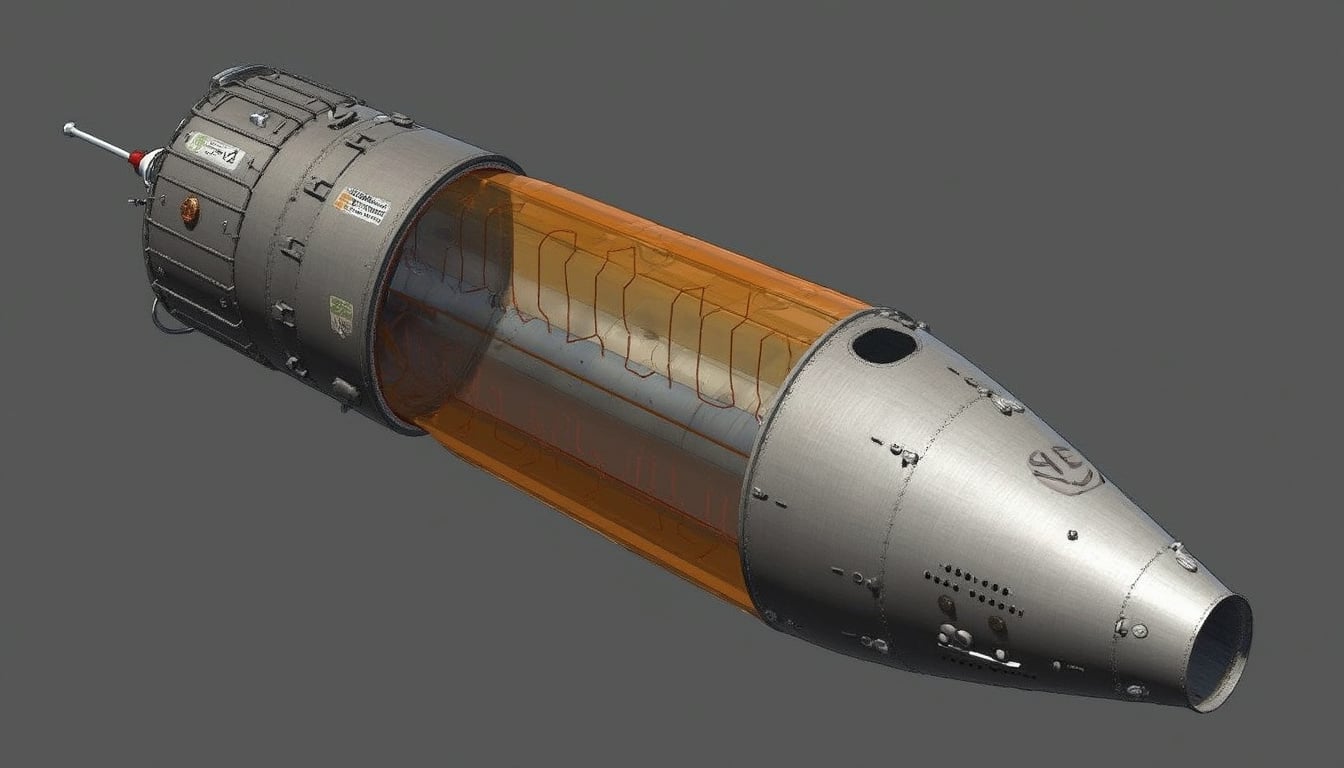SpaceX has achieved another milestone in its space exploration journey, recently launching the Bandwagon-3 rideshare mission, carrying with it a pioneering European reentry capsule named Phoenix 1. Launched from Cape Canaveral Space Force Station in Florida, this Falcon 9 rocket mission marks a significant leap in European space endeavors. With the goal of testing essential technology necessary for safe reentry, Phoenix 1 aims to revolutionize how cargo is brought back to Earth from space, integrating a new inflatable heat shield to ensure safe operations. As we delve into the details of this historic launch, we will explore its ramifications for Mr. Elon Musk’s SpaceX, the European Space Agency, and the broader implications for global space logistics.
This successful mission not only serves as a testing ground for the Phoenix system, but also carries multiple payloads, showcasing the collaborative atmosphere within the growing realm of space exploration. In the following sections, we will break down the specifics of the Bandwagon-3 mission, the significance of the Phoenix 1 capsule, and the various partners involved in this monumental venture, as well as the long-term goals poised for future space endeavors.
Overview of the Bandwagon-3 Mission
The Bandwagon-3 mission launched for the first time on April 21, 2025, with a launch time set for 8:48 PM EDT. The main highlight of the mission is the ambition behind the European capsule, Phoenix 1, which was designed by the Germany-based company Atmos Space Cargo. This mission represents a historic accomplishment as it is the first reentry mission ever conducted by a European entity. SpaceX’s Falcon 9 rocket not only provides opportunities for reentry tests but also serves as a cost-effective and reliable vehicle for a variety of payloads.

Payloads on Board
In addition to the Phoenix 1 reentry capsule, the Falcon 9 rocket carried several other payloads, fitting into the greater context of rideshare missions. Among these were the 425Sat-3, destined to support South Korea’s Agency for Defense Development, and Tomorrow-S7, a weather-forecasting satellite developed by Tomorrow Companies Inc. This incorporation of diverse payloads reflects the emerging trend in space logistics, focusing on information sharing and cooperative technology to maximize mission objectives.
The Importance of Rideshare Missions
Rideshare missions like Bandwagon-3 emphasize the shift in space operations, making it more accessible and affordable for space agencies and organizations worldwide. Rideshare missions, which entail multiple payloads sharing a single launch vehicle, are becoming increasingly popular due to their cost-effectiveness, allowing various operators to send their projects into space at a fraction of the cost they would incur if launching individually. SpaceX’s approach through rideshare missions enhances collaboration among different organizations, thus further propelling advancements across fields ranging from telecommunications to scientific research.
Highlighting the Phoenix 1 Capsule
The innovative Phoenix 1 capsule is at the forefront of this mission, representing a significant advance in reentry technology. This European endeavor aims to enhance microgravity research, enabling future missions to engage in space logistics and various important research opportunities. The capsule’s core technology relies heavily on its inflatable heat shield, a novel design that aims to maximize efficiency during reentry into Earth’s atmosphere and is crucial in ensuring payload safety.

Goals of the Phoenix Mission
The roots of the Phoenix project lie in aspirations to become a leader in space logistics and reentry technology. The mission aims not only to gather crucial data regarding reentry but also seeks to showcase the operational capabilities of the reusable design. European companies and organizations have invested heavily in developing advanced designs and technology, and the success of the Phoenix missions could pave the way for additional partnerships with global entities, including NASA, Rocket Lab, Blue Origin, and more.
Future of Space Logistics
The implications of the Bandwagon-3 mission extend far beyond this singular event. As the global space industry grows, effective and reliable logistics are paramount to conducting both manned and unmanned operations beyond low-Earth orbit. The focus on reusability, safety, and operational efficiency is a common thread among leading space companies, such as Boeing, Virgin Galactic, Arianespace, Northrop Grumman, and Lockheed Martin. The successful deployment of the Phoenix 1 capsule could inspire advanced projects aimed to facilitate future missions, such as specific cargo retrievals from the International Space Station or lunar missions.
The Role of SpaceX and Future Missions
Celebrated for its groundbreaking approach to space travel and technology, SpaceX has continually set new standards in the realm of space exploration. The Bandwagon-3 mission paves the way for additional flights under this series while also enriching the available data from the operation of previous missions. By partnering with various global entities, SpaceX enhances its influence, creating a ripple effect throughout the aerospace industry. This collaboration is vital when envisioning the ambitious projects aimed at exploring our solar system and beyond.
The Future of European Space Initiatives
This mission illustrates the burgeoning role of European nations and companies in space exploration, showcasing the collaboration between private entities and national space agencies. The European Space Agency continues to promote innovation and techno-scientific advancements, leveraging partnerships with leading edge companies like Atmos and others. As future missions are planned and partnerships develop, European emissions may emerge as a crucial part of global initiatives to address challenges posed by space exploration.
Building Towards the Next Milestone
With rising ambition within the European space landscape, future milestones can be anticipated as the success of the Phoenix 1 capsule reiterates the importance of safety and knowledge sharing in the development of effective space technology. The various partners involved in this mission can capitalize on its success to drive further advancements; potential new projects featuring collaborative initiatives can vastly improve methods of data collection and reporting back to Earth and beyond.
Impact on Global Collaborations and Challenges Ahead
As the Bandwagon-3 mission signifies a new benchmark for both SpaceX and its European counterparts, collaborations present opportunities and challenges in equal measure. The integration of diverse players into a cohesive operational framework requires communication and support in developing effective technologies that fulfill mission goals while adhering to safety and regulatory standards.
Future missions and projects highlighted by the ongoing collaboration may require a robust exchange of resources, ensuring all parties contribute to planning and design phases. This aspect emphasizes the importance of thoughtful engagement with both governmental bodies and private entities in navigating the evolving aerospace landscape.
Competition and Challenges
The race to dominate various aspects of space exploration does present challenges. Competing organizations like NASA, Rocket Lab, and Blue Origin each seek to establish their unique foothold in this rapidly evolving market. With increased opportunities come heightened expectations, complexity, and potential obstacles when scaling operations and launching new missions. SpaceX must stay ahead of the curve by identifying emerging trends, collaborating effectively, and maintaining a competitive edge in developing innovative technologies.
Concluding Observations on Space Missions
Though no definitive conclusion can be drawn from a single mission, the successful launch of Bandwagon-3 encapsulates the dynamic evolution of space exploration. Companies and countries around the globe continue to contribute to this burgeoning field, aiming to accelerate the pace of discovery and innovation. As entities embark on ambitious projects, the outcome of these missions will impact future engagements within the industry, ensuring further opportunities to build upon successes and learn from adversities encountered in this fascinating endeavor.
Notable Milestones in Space Missions History
| Year | Mission | Organization | Significance |
|---|---|---|---|
| 1961 | Vostok 1 | NASA | First human in space |
| 1969 | Apollo 11 | NASA | First moon landing |
| 1990 | Hubble Space Telescope | NASA | Revolutionized astronomy |
| 2000 | International Space Station | Multiple | Global collaboration in space |
| 2025 | Bandwagon-3 | SpaceX | First European reentry capsule mission |
As the Bandwagon-3 mission highlights the ongoing advancements in the space sector, organizations continue to push boundaries while creating collaborations that support future missions. The exciting developments stemming from this recent launch will only serve to enhance the ever-growing knowledge base of what lies beyond our planet.




Leave a Reply